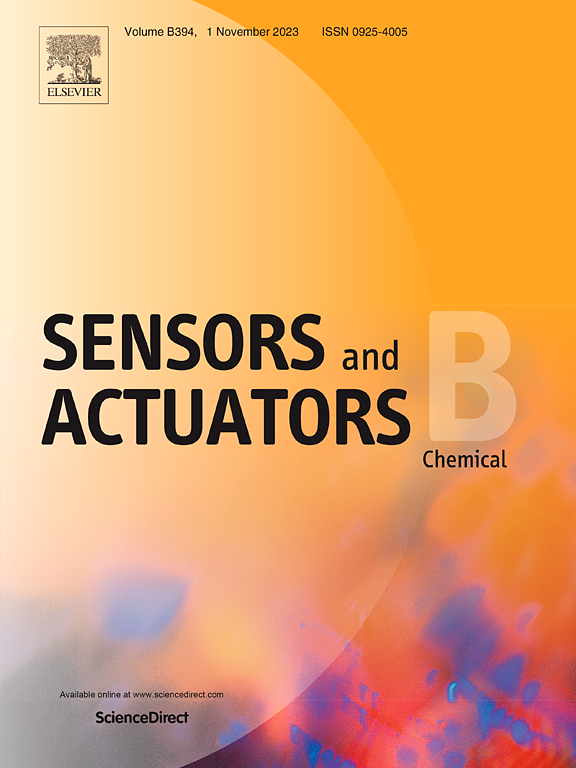比例SERS纳米探针通过准确检测内质网过氧化氢监测药物性肝损伤中的铁下垂
IF 8
1区 化学
Q1 CHEMISTRY, ANALYTICAL
引用次数: 0
摘要
药物性肝损伤(DILI)是一种主要的肝功能障碍,通常由过量或长期服用肝毒性药物引起。DILI的发生和发展与铁下垂密切相关。揭示铁下垂与DILI的内在关系,有助于DILI的早期诊断和治疗。本研究基于内质网(ER)中过氧化氢(H2O2)的变化,开发了一种独特的比例表面增强拉曼散射(SERS)纳米探针,以探索DILI与铁死亡之间的关系。SERS纳米探针由er靶向肽和H2O2响应拉曼报告蛋白(3-巯基苯基硼酸)组成,对H2O2表现出显著的比率SERS变化(I1071/998),具有高选择性和灵敏度。利用纳米探针,在诱导和抑制铁下垂的过程中,成功地跟踪了肝细胞内质网中H₂O₂水平的动态变化。此外,在细胞和小鼠模型中阐明了铁下垂与DILI之间复杂的相互作用。结合Western blot分析,证实了铁沉抑制可能通过改善Xc-/GSH/GPX4抗氧化系统对DILI的治疗作用。本研究为研究铁下垂与肝损伤的关系提供了一种新的途径,从而促进DILI的诊断和治疗。本文章由计算机程序翻译,如有差异,请以英文原文为准。

Ratiometric SERS nanoprobe for ferroptosis monitoring in drug-induced liver injury via accurate detection of hydrogen peroxide in endoplasmic reticulum
Drug-induced liver injury (DILI) is a major liver dysfunction commonly caused by excessive or long-term administration of hepatotoxic drugs. The initiation and development of DILI have been closely related to ferroptosis. Revealing the internal relationship between ferroptosis and DILI is beneficial for the early diagnosis and therapy of DILI. Herein, a unique ratiometric surface-enhanced Raman scattering (SERS) nanoprobe was developed to explore the association between DILI and ferroptosis based on the variations of hydrogen peroxide (H2O2) in endoplasmic reticulum (ER). The SERS nanoprobe is composed of an ER-targeting peptide and an H2O2-responsive Raman reporter (3-mercaptophenylboronic acid), which shows a remarkable ratiometric SERS change (I1071/998) for H2O2 with high selectivity and sensitivity. Using the nanoprobe, the dynamic alterations of H₂O₂ levels in ER within hepatocytes were successfully tracked throughout both the induction and inhibition of ferroptosis. Moreover, the complex interplay between ferroptosis and DILI in both cellular and murine models were elucidated. Complemented by Western blot analysis, the possible therapeutic effect of ferroptosis inhibition on DILI was confirmed by improving the Xc-/GSH/GPX4 antioxidant system. This study presents a novel approach for studying the relationship between ferroptosis and liver injury, thereby advancing DILI diagnosis and treatment.
求助全文
通过发布文献求助,成功后即可免费获取论文全文。
去求助
来源期刊

Sensors and Actuators B: Chemical
工程技术-电化学
CiteScore
14.60
自引率
11.90%
发文量
1776
审稿时长
3.2 months
期刊介绍:
Sensors & Actuators, B: Chemical is an international journal focused on the research and development of chemical transducers. It covers chemical sensors and biosensors, chemical actuators, and analytical microsystems. The journal is interdisciplinary, aiming to publish original works showcasing substantial advancements beyond the current state of the art in these fields, with practical applicability to solving meaningful analytical problems. Review articles are accepted by invitation from an Editor of the journal.
 求助内容:
求助内容: 应助结果提醒方式:
应助结果提醒方式:


